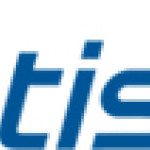- Industri: Telecommunications
- Number of terms: 29235
- Number of blossaries: 0
- Company Profile:
ATIS is the leading technical planning and standards development organization committed to the rapid development of global, market-driven standards for the information, entertainment and communications industry.
In digital telephony, a code composed of a reserved binary number that is sent instead of an actual sound sample value from the CODEC when the incoming voice volume is below a certain level (i.e., when there is no sound. ) Depending on the transmission system used, the silence code is used for two purposes: (a) to allow other (lower priority) users to use that time-slot and (b) to produce a standard presence noise for the receiver.
Industry:Telecommunications
In digital systems, a sequence of bits introduced into a transmitted signal to achieve or maintain synchronism.
Industry:Telecommunications
In digital speech transmission, the use of periods of inactivity or constant signal level to increase the transmission efficiency by insertion of additional signals. 2. A process that takes advantage of inactive periods of a conversation to insert speech from other conversations and to remove silent periods.
Industry:Telecommunications
In digital networking, an active device, having multiple input/output (I/O) ports, in which a signal introduced at the input of any port appears at the output of every port. Note 1: A multiport repeater usually performs regenerative functions, i.e., it reshapes the digital signals. Note 2: Depending on the application, a multiport repeater may be designed not to repeat a signal back to the port from which it originated.
Industry:Telecommunications
In digital facsimile, density step lines in the recorded copy resulting from analog-to-digital conversion when the object, i.e., the original, has observable shades of gray between the smallest density steps of the digital system.
Industry:Telecommunications
In digital data transmission, the use of a clock rate of 2n times the modulation rate, where n is an integer greater than one.
Industry:Telecommunications
In digital data transmission, a system employing either forward error correction (FEC) or automatic repeat-request (ARQ) techniques such that most transmission errors are automatically removed from the data unit prior to delivery to the destination facility.
Industry:Telecommunications
In digital data transmission, a sequence of bits transmitted between consecutive frames. Note: Interframe time fill does not include bits stuffed within a frame.
Industry:Telecommunications
In digital communications, a prescribed recurring pattern of bits transmitted to enable the receiver to achieve frame synchronization.
Industry:Telecommunications
In digital communications systems, a channel that has a useful capacity of only 56 kb/s (kilobits per second,) instead of 64 kb/s. Note: The restricted channel, currently common in North America, was originally developed to satisfy a ones-density limitation in T1 circuits.
Industry:Telecommunications
